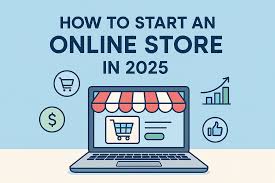The demand for online shopping has grown exponentially in recent years, and groceries are no exception. Customers increasingly prefer the convenience of ordering essentials online rather than making frequent trips to physical stores. For entrepreneurs, this presents a massive opportunity to tap into the digital grocery market. However, building a successful online grocery business requires strategic planning, technology integration, and customer-centric services.
This guide explains how to start an online grocery store in 10 steps, covering everything from planning and technology to operations and marketing.
Step 1: Conduct Market Research
The first step in starting any business is understanding the market. Before investing resources, evaluate demand in your target location.
Key points to analyze:
- Customer Behavior: Do customers in your area prefer online shopping for groceries?
- Competitors: Identify existing online grocery platforms and their offerings.
- Popular Products: Determine which grocery categories (fruits, vegetables, packaged foods, dairy) are in high demand.
- Pain Points: Look for gaps such as delayed deliveries, lack of fresh produce, or poor customer service that your store can solve.
Comprehensive research lays the foundation for a strong business model.
Step 2: Define Your Business Model
Next, decide the type of online grocery store you want to operate. There are several models to choose from:
- Inventory Model: You purchase groceries in bulk, store them in a warehouse, and deliver them directly.
- Marketplace Model: Connect local grocery vendors with customers through your platform without holding inventory.
- Hybrid Model: A combination of holding some inventory and partnering with third-party vendors.
- On-Demand Delivery Model: Partner with local stores and deliver products within hours.
Each model has pros and cons. Choose one based on your budget, location, and scalability plans.
Step 3: Register Your Business and Legal Compliance
For long-term success, ensure your business is legally compliant. Steps include:
- Register your company as per local laws.
- Acquire licenses for selling food and grocery products.
- Register for taxation (like GST/VAT depending on your country).
- Create terms and conditions, privacy policy, and return policy for your website.
These legal safeguards build trust with customers and protect your business.
Step 4: Build a Strong Supply Chain
An online grocery business relies heavily on an efficient supply chain. This includes:
- Partnering with local farmers, wholesalers, and distributors.
- Building relationships with vendors who can supply fresh and quality products.
- Implementing inventory management systems to track product availability.
- Setting up cold storage for perishables if you’re using the inventory model.
A reliable supply chain ensures you deliver fresh groceries on time, boosting customer satisfaction.
Step 5: Choose the Right Technology Platform
Technology is the backbone of an online grocery business. Your website and mobile app are where customers interact with your store.
Essential features to include:
- User-Friendly Interface: Easy browsing, search, and navigation.
- Product Listings: High-quality images, descriptions, and categories.
- Shopping Cart: Simple add-to-cart and checkout process.
- Payment Gateways: Multiple payment options, including cards, wallets, and cash-on-delivery.
- Real-Time Tracking: Allow customers to track their order status.
- Inventory Management System: Syncs stock availability with your platform.
- Admin Dashboard: For managing orders, deliveries, and analytics.
Whether you build from scratch or use ready-to-use platforms, ensure your technology can scale as your business grows.
Step 6: Design a Delivery System
Delivery is the core of an online grocery store. Customers expect fresh groceries delivered on time.
Considerations for an effective delivery system:
- Delivery Zones: Define the areas where you can provide services initially.
- Logistics: Decide whether you will manage deliveries in-house or partner with third-party delivery providers.
- Fleet Management: Maintain vehicles or bikes for delivery personnel.
- Route Optimization: Use technology to optimize delivery routes for speed and cost efficiency.
- Cold Chain Logistics: For perishable items, ensure proper refrigeration during transport.
A smooth delivery system helps build customer loyalty.
Step 7: Set Pricing and Offers
Pricing plays a major role in attracting and retaining customers. While setting prices:
- Keep them competitive compared to offline grocery stores.
- Consider dynamic pricing for seasonal products.
- Offer discounts for first-time users, subscription models, or bulk orders.
- Introduce loyalty points, cashback, and referral bonuses.
Smart pricing ensures profitability while staying appealing to customers.
Step 8: Focus on Marketing and Branding
Even the best online grocery store won’t succeed without visibility. Develop a strong marketing strategy:
- Digital Marketing: Use SEO, paid ads, and social media campaigns to attract customers.
- Content Marketing: Share blogs, recipes, and grocery tips to engage users.
- Email Marketing: Send personalized offers and reminders for grocery shopping.
- Influencer Partnerships: Collaborate with food bloggers or local influencers.
- Referral Programs: Encourage existing users to refer friends and family.
Branding elements like a memorable logo, consistent color scheme, and customer-first messaging further enhance trust.
Step 9: Ensure Excellent Customer Support
Customer support is critical in retaining users. Provide:
- A 24/7 helpdesk via chat, phone, or email.
- Quick resolution of complaints such as late delivery or damaged items.
- Flexible return and refund policies for defective products.
- Proactive communication during delays.
A satisfied customer is more likely to become a repeat buyer and recommend your platform.
Step 10: Scale and Innovate
Once you establish your online grocery store, think about scaling. Strategies include:
- Expanding delivery areas.
- Adding new product categories like organic foods, household supplies, or bakery items.
- Implementing AI-driven recommendations for customers.
- Offering subscription-based grocery delivery services.
- Using data analytics to predict demand and optimize inventory.
Innovation ensures long-term growth and helps you stay ahead of competitors.
Challenges in Running an Online Grocery Store
While the opportunities are immense, be prepared for challenges:
- Logistics Complexity: Managing on-time deliveries across regions.
- Inventory Issues: Stockouts and wastage of perishable goods.
- Thin Margins: Groceries typically have lower profit margins.
- Customer Expectations: Demands for faster delivery and consistent quality.
- High Competition: Competing with established players.
Overcoming these challenges requires continuous improvement and customer-centric strategies.
Future of Online Grocery Stores
The online grocery industry is poised for massive growth due to:
- Increasing smartphone and internet penetration.
- Changing lifestyles where convenience is a priority.
- Growing trust in digital payments and e-commerce.
- Rise of subscription-based grocery delivery.
- Integration of AI, IoT, and automation for smarter operations.
Entrepreneurs who invest in innovation and customer experience will benefit most from this digital shift.
Conclusion
Learning how to start an online grocery store in 10 steps gives entrepreneurs a clear roadmap to build, launch, and scale their business. From market research and supply chain management to technology integration and customer support, each step is vital for long-term success.
While the grocery industry is competitive, focusing on efficiency, quality, and customer satisfaction sets you apart. As the demand for digital grocery solutions continues to rise, now is the perfect time to launch your online store.For entrepreneurs seeking technical expertise in building robust platforms and ensuring seamless startup MVP development, many rely on the experience and skills of Findthecoder to bring their ideas to life.

